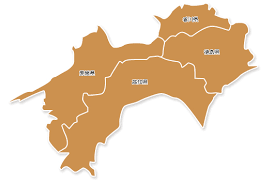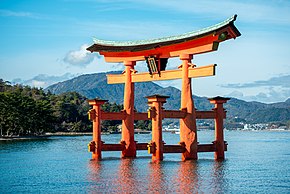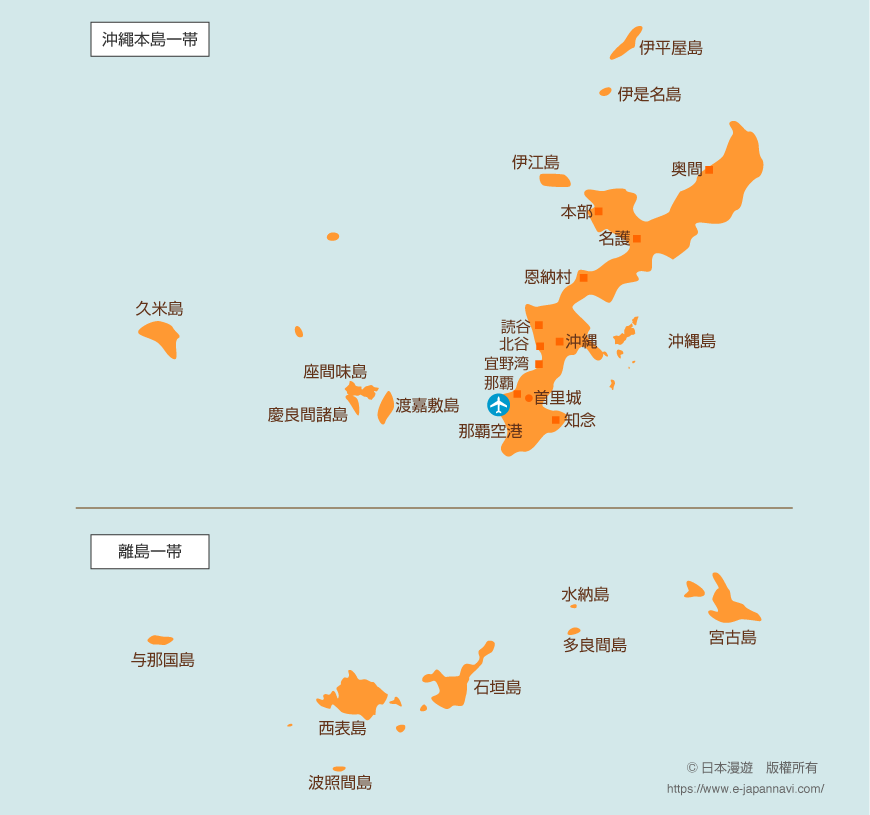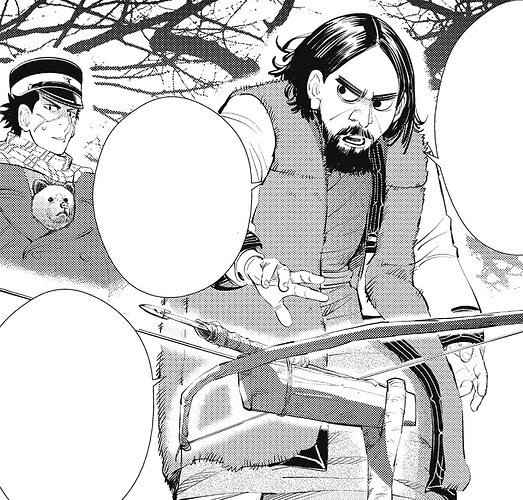- Mazu Temple, historically based on the unofficial armed forces, pirates, and maritime merchants off the coast of southeast China
Units: san yan chong (musketeer armed with three-eyed gun, with low single shot damage but fire three shots simultaneously)
Available maps: Indochina, Malaysia, Borneo, Canton (new), Fujian (new)
2 Kamuy Temple, historically based on the Ainu people in northeast Asia
Units: Ainu archer and bear
Available maps: Honshu, Hokkaido, Manchuria, Siberia, Kamchatka, Sakhalin (new)
3 Wudang, historically based on the famous Taoist temple, corresponds to Shaolin as a famous Buddhism temple in China
Units: Taoist master(shock infantry with healing ability)
Available maps: Central Plain, Yellow River, Silk Road, Sichuan (new), Canton (new), Fujian (new)
4 Lama Temple, historically based on the Tibetan religion
Units: cavalry archers and slingers with charged musket attacks
Available maps: Himalayas, Himalayas Upper, Yellow River, Mongolia, Silk Road, Parallel Rivers, Sichuan (new)
5 Chiyou Temple: historically based on the culture of the Southwest China’s ethnical groups, such as Miao, Yao
Units: Miao crossbowman and skirmisher
Available maps: Parallel Rivers, Silk Road, Central Plain, Yellow River, Sichuan (New)
6 Theravada Buddhist Temple: historically based on Buddhism in Southeast Asia
Units: war elephant (now in Bhakti TP sites)
Available maps: Parallel Rivers, Indochina, Ceylon, Borneo, Malaysia - Arabian Tribe: historically based on the tribes in Arabian Peninsula and Maghrib
Units: musket camel rider, similar to zamburak
Available maps: Fertile Crescent, Arabia, Tripolitania, Nile Valley, Saharan Routes - Tengri: add a new unit, Solon/Evenki Archer (heavy armored archer), so that it can be used in Northeast Asia maps such as Kamchatka, Manchuria and Sakhalin (new)
- Zen: add a new unit, the Korean archer (with a charged ability to project pyeonjeon arrows)
A Taoist unit can be designed to be an A daoshi (“master of the Tao”), a unit that is good at Tai Chi, or an auxiliary alchemist that can reduce the rof of surrounding musket units. Shinto is indeed very similar to the Japanese design, But you can add new Japanese maps to further refine Japan, such as Shikoku, Kyushu, and Ryukyu.
Whereas European alchemy eventually centered on the transmutation of base metals into noble metals, Chinese alchemy had a more obvious connection to medicine. The philosopher’s stone of European alchemists can be compared to the Grand Elixir of Immortality sought by Chinese alchemists. In the hermetic view, these two goals were not unconnected, and the philosopher’s stone was often equated with the universal panacea; therefore, the two traditions may have had more in common than initially appears.
Black powder may have been an important invention of Chinese alchemists. As previously stated above, Chinese alchemy was more related to medicine. It is said that the Chinese invented gunpowder while trying to find a potion for eternal life. Described in 9th-century texts and used in fireworks in China by the 10th century, it was used in cannons by 1290.From China, the use of gunpowder spread to Japan, the Mongols, the Muslim world, and Europe. Gunpowder was used by the Mongols against the Hungarians in 1241, and in Europe by the 14th century.
Chinese alchemy was closely connected to Taoist forms of traditional Chinese medicine, such as Acupuncture and Moxibustion. In the early Song dynasty, followers of this Taoist idea (chiefly the elite and upper class) would ingest mercuric sulfide, which, though tolerable in low levels, led many to suicide. Thinking that this consequential death would lead to freedom and access to the Taoist heavens, the ensuing deaths encouraged people to eschew this method of alchemy in favor of external sources
Of course, Japan also needs more maps. Currently, Japan only has Hokkaido and Honshu Island. I hope that Kyushu and Shikoku, or Ryukyu will be added in the future.


Japan can also have a new religious shrine, Shintoism

Shinto
Shinto, (Japanese: 神道, romanized: Shintō) or Shintoism, is a religion that originated in Japan. Classified as an East Asian religion by scholars of religion, its practitioners often regard it as Japan’s indigenous religion and as a nature religion. Scholars sometimes call its practitioners Shintoists, although adherents rarely use that term themselves. Shinto has no central authority in control and much diversity exists among practitioners. Shinto is polytheistic and revolves around the kami, su…
No need. We already have Iron Troop, Wokou and Ronin.
Not a mainstream religion.
We could have directly suggested an Ainu settlement, like the Native Americans.
After all, Ezochi (Hokkaido), Sakhalin, and Kamchatka had few Asian mainstream religious forces.
Rather than Taoism, I would like to see Northern Shaolin become a second Chinese religion with Shaolin monk soldiers using sticks. Rename the original Shaolin to Southern Shaolin (because of their rattan shields), so that there are decent minor civilizations in the south and north of China, and they are all world-famous Buddhist warriors.
Of course, Taoism is not impossible, if there are enough maps.
Compared with Taoist master, why don’t name it Wuxia? This is more of a name for a combat-capable unit.
Whether it’s called Lama Temple or Tibetan Buddhist Temple, let them replace Shaolin in Mongolia, Manchuria and Himalayas.
Same situation with Ainu. You can directly suggest a Hmong settlement.
This is better than just catering to the tradition of religious minor civilizations.
As long as the major religions have been introduced into the game, but there are still some regions that cannot be covered decently, I believe the dev will consider Asian native settlements. The first choice should be the Ainu and Hmong, and I selfishly hope that the Formosans will be too.
Exactly. Let it replace the Zen temples and Sufi mosques there.
Yes, like this. The Ainu and Hmong settlements I speak of should be like this Arab settlement.
I’d rather add an Evenki or Chukchi or Yakut or Koryak settlement to Siberia as a second minor civilization.
After all Siberia is a good map to split into more maps.
There are only Jesuits in Korea. I don’t think we need to be so “risky”.
I would suggest that the first island chain be divided into the following ways from north to south.
- Sakhalin (or Karafuto)
- Ezo (or Ezochi)
- Ōu (the name of the main mountain range of modern Tōhoku region of Japan, and also the historical name of that region)
- Kantō
- Hokuriku (a narrow, long cold land facing the vast Sea of Japan, with many ancient buildings that can be represented by Zen temples)
- Tōkai (the origin of the Oda clan, the essential route between East and West Japan)
- Kansai (or Kinki)
- Setouchi (a map with an inland sea but as narrow and long as the size of Araucania)
- Kyushu
- Ryukyu Islands
- Formosa (an island map with flat land and a water trade route on one side, and mountainous and forested land and sea with whales on the other)
- Black Ditch (The historical name of the Taiwan Strait, if there is a map that cover the two sides of the Strait, it is recommended to use this name to avoid disputes)
- Luzon
- Mindanao
The current Honshu is very suitable for Ryukyu, that is, renaming Honshu to Ryukyu and adding water trade routes. On the other hand, the current Hokkaido is suitable for Kanto, so it can also be renamed Kanto.
It can be seen that Japan can have many maps, enough to have the Shinto Grand Shrine as a new small civilization. The Shinto unit could be Kunoichi, a unit like Priestess + Ninja. On the other hand, there will be no Zen Temple and Shinto Grand Shrine in Sakhalin and Ezochi, while the Ainu settlements can appear in Sakhalin, Ezochi and Ōu (and maybe Kamchatka).
By the way, regarding the blank of South China, I currently suggest to divide it into Yangtze River, Sichuan Basin, Yungui Plateau, and Southeastern Hills (or Pearl River, anyway better than Fujian or Guangzhou).
That’s way too fine of a division. They should go in the other direction and have one Shaolin Temple and only one Shaolin unit. The Kung Fu Warrior Monks with staffs should be the unit for Shaolin Temples. Rattan Shields could be made into a mercenary unit themed after the Tigers of War. The Chinese civ should lose its Shaolin Master monk explorer and Shaolin Disciple units and get a non-religious hero unit and Confucian Scholars as healer units.
I’d also split Japan into more maps (for example, add a second map based on Hokkaido), to also justify removing Zen Temples from Mainland Asia maps, since they’re way too Japanese to represent orher buddhists.
I’d also add some SEA natives in order to replace other Asian natives in maps like Borneo.
I want to see ‘piratical’ natives of SEA, like the Bugi (where ‘Boogeyman’ came from) and the Orang Laut.
I think Ainus should just be called “Ainu” in-game and Evenkis could also be their own thing
If Tengris are to get a new unit, it should be a Mongolian-speaking one imo.
While rewatching Golden Kamuy (an anime and manga series that delves a lot into Ainu culture and even went to Sakhalin for a bit), I was able to think of at least three things that could be turned into technologies:
Citatap
Idk what it could affect, maybe training times or food cost?
Aconite poison arrows (she doesn’t get to hit any arrow but you can see her shooting some here)
Could give their units poison damage like with those Yoruba, Tupi and Carib techs
Amappo (I couldn’t find any clip of it, but it’s basically a tripwire trap that uses a crossbow and the aforementioned poison arrows)
Could affect hunting
Sure that Zen doesn’t fit the Buddhist community out of Japan. In SEA, they could and should be replaced with Theravada, which I also have stated above.
Look at my list, the modern Japan is split into 9 maps. Including Sakhalin and Kamchatka, I think those 11 maps are pretty enough to allow Zen to appear in Japan only and allow Ainu Settlement and Shinto Grand Shine to be introduced as new minor civs so a Second map for an existing map is unnecessary.
The rattan shield is not something so mysterious, idiosyncratic, romantic or legendary. It had been used for many centuries in southern China, Indochina and even Korea. As a common equipment, it has existed in the Imperial or private army in all Chinese dynasties, such like in the Qi Jiguang’s Mandarin Duck Squad.
I prefer to make Rattan Shield a Shaolin unit together with the stick monk, making Shaolin a minor civ having 2 units. Even being a mercenary, I wouldn’t make Rattan Shield such a specific and particular thing like the tiger soldier you mentioned.
I think the current Asian heroes could be moved to the relevant temples as well (like with the Akan Tufohen and the Berber Sultan). It never made sense to me that the Asian civs are led by monks.
Suitable Holy Sites could be created for this purpose, but keeping in mind that they should not be the default Minor Civilizations on Asian maps. In order to make Holy Sites an even better addition to the maps, I am considering adding a slightly larger number of them from different parts of the world, e.g.:
-
Shinto Temple - Holy Site for Japanese maps that worked with other (1-2) Japanese Minor Civilizations - but these would be people based. Japanese monk can be moved here. Sohei Archer could be an elite limited archer at the Shinto Holy Site.
-
Uluru Rock - could be an Aboriginal Holy Site. It would appear on Australian maps. In this way, the Aborigines could be represented in this game.
-
Orthodox Temple - It would be the Holy Site, which would appear on the Balkan, Eastern European and Siberian maps.
-
Catholic Cathedral - this would be a Holy Site that would appear on Western European, Central European and Mediterranean maps. The Inquisitor could be trained there.
-
Hussite Camp - It would be the Holy Site specialize in sieges - Hussite Camp (visually it could resemble Karlštejn Castle surrounded by siege machines and Chapel). Hussite Camp could offer training in War Wagons, Trebuchets and firearms precursors - Hákovnice (Unfortunately, it’s not in English).
-
Protestant Town - This Holy Site could appear on North American, British, German and Scandinavian maps. Could offer Pilgrims training.
Other Holy Sites based on other religions could also be added - especially for African and Asian maps.
Moving Asian Monks - Asian Hero units
- As mentioned above, Japanese Sohei Archer should be moved to a brand new Holy Site - Shinto Temple.
- Chinese Shaolin Master should be carried to the Shaolin Temple - simple and obvious.
- Indian Brahmin could be transferred to Bhakti Temple or Udasi Temple (I think better to Udasi Temple as there is only one trainable unit).
If you get rid of the asian monks as heroes though, what’d you put in their place?
And don’t tell me that you’d put a General there. That’s the most lame, basic idea you could go for and Colonial America civs already use them.
If Africans can have super generic leader names like “ras/emir”, I guess “lord” or equivalent would be good enough.
In fact I’d make the radical suggestion of changing all heroes to “lord” or equivalent, because we have deviated far from the “hero as scout” design concept since TWC.
Japan - Daimyo
India - Emir
China - Iron Cap Prince
That’s what I suggested in my post about it:
It’s my dream ![]()
Really? That’s your problem?
No. Please be aware of the difference between Buddhism and Shintoism.
These cannot sustain the existing gameplay of the civs.
A Daimyo can be a hero unit obtained through cards, age advance, or techs, but should never be a starting hero. The Japanese starting heroes should not have the speed of cavalry, let alone less than 2, unless you want to completely abandon the existing shrine mechanics. The status of the daimyo would not allow him to build shrines too. There are obviously many explorers and cartographers in Japanese history who explored the Japanese archipelago and today’s Hokkaido and Sakhalin, such as Mogami Tokunai, Inō Tadataka, and Mamiya Rinzō. Why not build on them and simply design non-monk heroes who can build Shrines and use muskets or bows to replace the existing ones?
The Iron Cap Prince should not be a leader who owns territory and participates in wars in the new world, at least not the most suitable. Feudalism was not popular in the Qing Dynasty in China. The princes have no fief, and live in palaces in the capital almost all their lives. Due to being deliberately weakened by the emperor, the nobles basically had no military power, and even if they had, it was often only in name. Even a simple Chinese General is a better term, or I like the Armed Caravan Leader which is full of Chinese flavours, at least they can maintain the mechanics of training guards/members like the current Disciples, rather than unnecessarily copy the rebirth mechanics of African heroes.
Emir didn’t seem to be a commonly used title in Mughal India, at least the term is better known in other Muslim countries. In contrast, as a hero on an elephant’s back, Raja or Zamindar was well suited to the Indians as an autonomous ruler and military leader.
For reference.
I have a problem with your suggestion: Buddhism was the state religion of Japan as much as Catholicism was in the US. And even if it was, not every family had a shrine. Imo it makes no sense for buddhist shrines to be the Japanese replacement of houses. I’d at least replace them with shinto shrines, but optimally they should be replaced with something else in the role of houses (maybe the Chinese village, but with Japanese-style houses).
As for the rest, I have to read the whole thread, but I also found it weird how you act like exploring the New World is still the sole focus of the game.
I have not suggested to change the current Shrine mechanics.
The shrines in the game are already Shinto shrines.
Buddhist monks should not build Shinto shrines, and daimyos would not build shrines themselves due to their high noble status, but it is reasonable design for explorers and cartographers who came from commoners and low-ranking samurai classes to build shrines.
Houses in Japan can be named “Ie” (pronounced yi-e) or “Mura” or “Machi”, which literally means “house”, “village”, “town” respectively. I won’t completely deny the feasibility of replacing the current Shrines with ordinary house buildings, but I don’t recommend it. Even if we could figure out an alternative to using animals, it would still revolutionize this civilization at its core. The least impactful approach would probably just be to simply rename the current Shrines to those terms and maybe change the appearances, but that still won’t change the point that Buddhist monks and daimyo are not suitable for building them while villagers and explorers are.
Of course exploration is not the sole focus, but it is still a part of the game. It is still valid and appropriate to use a design with an exploration theme. Obviously your game on the maps is far outside your home city.
Anyway, daimyo is not suitable as the starting hero, in terms of game design. Japanese had explorers, and that’s obviously a good material for the game.



